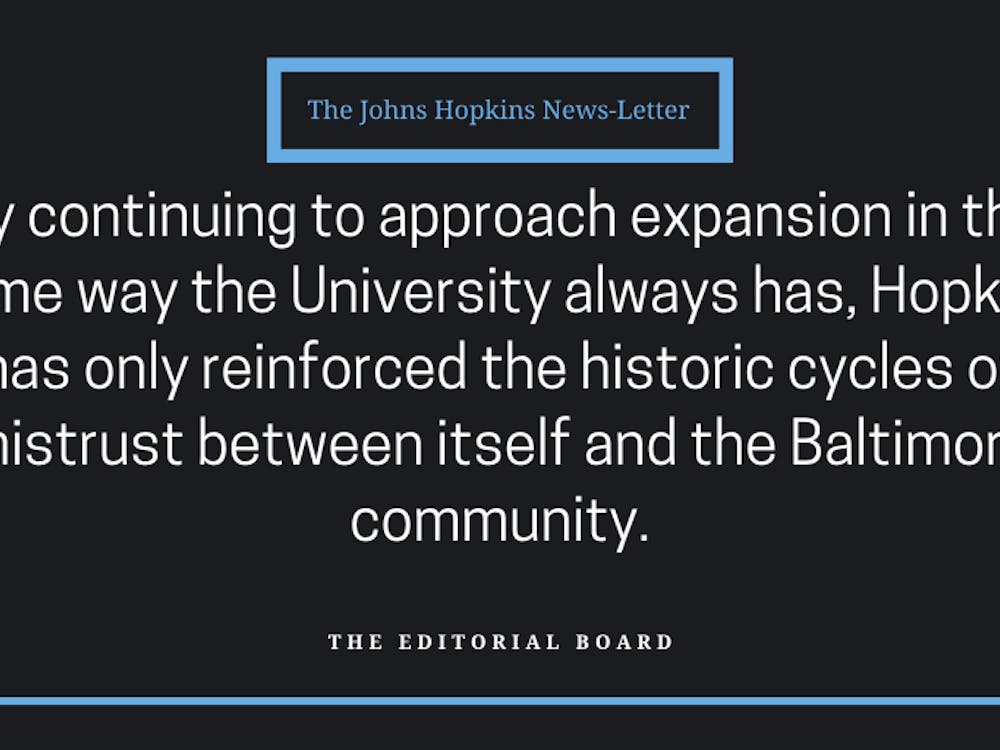On April 20, The News-Letter ran a piece titled “Sexual assault at college: Confronting the rapists in our lives.” Although it is perfectly understandable where the author, a female senior undergraduate student studying International Studies, is coming from, there is a lack of some key points that provide the necessary context to fully comprehend the issue that King, the writer, brought forth.
Beginning with the study from the Bureau of Justice Statistics that she refers to in the first paragraph. King accurately states that the study “found that one in five undergraduate women will experience sexual assault while in college.” While her statement, taken straight from the study, is accurate, she continues on with, “That means you probably know someone who was raped at Hopkins. It also means you probably know a rapist.”
Now let’s look at the facts more carefully. King just extrapolated that there are rapists in our friend circles while citing a statistic that deals with sexual assault. Sexual assault is not the same thing as rape. Let’s make that quite clear. In fact, a quick check of the Bureau of Justice Statistics’ website will show a well-defined difference between sexual assault and rape.
On the webpage about rape and sexual assault, rape is defined as “forced sexual intercourse including both psychological coercion as well as physical force. Forced sexual intercourse means penetration by the offender(s). Includes attempted rapes, male as well as female victims, and both heterosexual and same sex rape. Attempted rape includes verbal threats of rape.”
Sexual assault is then clearly defined in its own paragraph as being “a wide range of victimizations, separate from rape or attempted rape. These crimes include attacks or attempted attacks generally involving unwanted sexual contact between victim and offender. Sexual assaults may or may not involve force and include such things as grabbing or fondling. It also includes verbal threats.”
Thus, it is clear that the statistic referenced by King has no implication on rape and its actual frequency in college. Moreover, much earlier in the report on page ES-7 (19 of the PDF), the report states the following:
“The average victimization incidence rate for rape per 1,000 undergraduate females was 54, and ranged from 28 at School 9 to 110 at School 5.”
This statement would indicate that the study performed by the Bureau of Justice Statistics actually finds that, on average, about one in 20 undergraduate women will experience rape while in college. Of course, this statistic is also abhorrent and universities should take measures to reduce this rate to zero. However, we must not misrepresent the case as King did in her article.
King’s misrepresentation implies that we likely know far fewer rapists than the article indicates. Although her intentions may be noble, the impact of this distortion can be devastating by shaping readers’ minds who are unfamiliar with the topic.
As U.S. citizens, we are guaranteed due process by the Constitution. The accused are innocent until proven guilty beyond a reasonable doubt. Therefore, a person accused of rape is not automatically a rapist, nor should they be treated as such until proven otherwise.
William Bryden is a junior economics major from Conway, Ark.
Editor's Note: The article's original headline, "Students might not know rapists on campus", was changed per the request of the writer.






















Please note All comments are eligible for publication in The News-Letter.